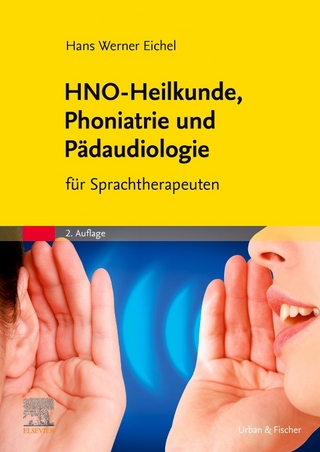
Speech and Voice Science
Plural Publishing Inc (Verlag)
978-1-63550-322-7 (ISBN)
Speech and Voice Science, Fourth Edition is the only textbook to provide comprehensive and detailed information on both voice source and vocal tract contributions to speech production. In addition, it is the only textbook to address dialectical and nonnative language differences in vowel and consonant production, bias in perception of speaker identity, and prosody (suprasegmental features) in detail. With the new edition, clinical application is integrated throughout the text.
Due to its highly readable writing style is user-friendly for all levels of students, instructors report using this book for a wide variety of courses, including undergraduate and graduate courses in acoustic phonetics, speech science, instrumentation, and voice disorders. Heavily revised and updated, this fourth edition offers multiple new resources for instructors and students to enhance classroom learning and active student participation. At the same time, this text provides flexibility to allow instructors to construct a classroom learning experience that best suits their course objectives.
Speech and Voice Science now has an accompanying workbook by Alison Behrman and Donald Finan!
New to the Fourth Edition
*Sixteen new illustrations and nineteen revised illustrations, many now in color
*New coverage of topics related to diversity, including: Dialectical and nonnative language differences in vowel and consonant production and what makes all of us have an "accent" (Chapter 7 - Vowels and Chapter 8 - Consonants); Perception of speaker identity, including race/ethnicity, gender, and accent (Chapter 11- Speech Perception)
*Increased focus on clinical application throughout each chapter, including three new sections
*Updated Chapter 4 (Breathing) includes enhanced discussion of speech breathing and new accompanying illustrations.
*Updated Chapter 10 (Theories of Speech Production) now includes the DIVA Model, motor learning theory, and clinical applications
*Updated Chapter 11 (Speech Perception) now includes revised Motor Learning theory, Mirror Neurons, and clinical applications
*Expanded guide for students on best practices for studying in Chapter 1(Introduction)
Key Features:
*A two-color interior to provide increased readability
*Heavily illustrated, including color figures, to enhance information provided in the text
*Each chapter includes study questions to help students focus on key concepts
*Sidebars throughout the text provide a deeper dive into related topics
*Forty-nine spectrogram figures provide increased clarity of key acoustic features of vowels and consonants
*Fourteen clinical cases throughout the book to help students apply speech science principles to clinical practice
Alison Behrman, PhD, CCC-SLP, is Associate Professor in the Department of Speech-Language-Hearing Sciences at Lehman College/City University of New York, where she teaches courses in speech science, anatomy and physiology, neuroanatomy, motor speech disorders, voice disorders, and nonnative accents.
Clinical Cases and Applications
Preface
Acknowledgments
About the Illustrator
About the Contributor
Chapter 1. Introduction
1.1 The Clinical Usefulness of Speech and Voice Science
1.2 Defining Speech Science
1.3 Advice for Students on Effective Study Techniques
Chapter 2. Describing and Explaining Motion
2.1 Systems of Measurement
2.2 Describing Motion: Speed, Velocity, Acceleration, and Deceleration
2.3 Newton's Laws Explain Motion
2.4 Momentum and Energy
2.5 Three States of Matter
Chapter 3. Sound Waves
3.1 Vibration
3.2 The Nature of Waves
3.3 Transfer of Energy in Waves
3.4 Visualizing a Sound Wave
3.5 Properties of Sound Waves
3.6 The Perception of Sound Waves
3.7 Pure and Complex Tones
3.8 Behavior of Sound Waves
3.9 Resonance
Recommended Internet Sites for Further Learning
Chapter 4. Breathing
Clinical Case 1: Breath-Holding Speech
4.1 Introduction
4.2 Respiration
4.3 Balloons or Boyle's Law?
4.4 Anatomy of the Lower Airway
4.5 The Biomechanics of Breathing
4.6 The Biomechanics of Speech Breathing
4.7 The Work of Breathing
4.8 Instrumentation for Measuring Breathing Kinematics
4.9 Clinical Application: Disorders Related to Breathing
Recommended Internet Sites for Further Learning
Chapter 5. Phonation I: Basic Voice Science
Clinical Case 2: Running Out of Breath
5.1 Overview
5.2 Anatomy of the Larynx
5.3 Neural Control of Phonation
5.4 Theories of Voice Production
5.5 Biomechanics of Vocal Fold Vibration
5.6 Biomechanical Stress-Strain Properties of Vocal Fold Tissues
5.7 Physiology of Phonatory Control
558 Voice Quality
5.9 Clinical Application: Disorders Related to Voice Production
Recommended Internet Sites for Further Learning
Chapter 6. Phonation II: Measurement and Instrumentation
Clinical Case 3: Camp Voice
6.1 Measurement of |o and Intensity
6.2 Measurement of Phonatory Aerodynamics
6.3 Instrumentation for Exploring the Dynamics of the Vocal Folds
6.4 Vocal Registers
Clinical Case 4: Persistent Mutational Falsetto
Recommended Internet Sites for Further Learning
Chapter 7. The Production and Perception of Vowels
Clinical Case 5: Accent Management
7.1 Introduction
7.2 Acoustic Theory of Speech Production
7.3 Vowels
7.4 Language and Dialect Influences on Vowel Production
7.5 The Vocal Tract as a Regulator of Intensity
7.6 Acoustic Filters
7.7 Instrumentation for Measuring Vocal Tract Acoustics
7.8 Vocal Tract Imaging: Current Research and Future Trends
Clinical Case 6: Ataxic Dysarthria
Recommended Internet Sites for Further Learning
Chapter 8. The Production and Perception of Consonants
Clinical Case 7: Facial Nerve Trauma
8.1 Introduction
8.2 Three Sources of Speech Sounds
8.3 Phonetic Description of Consonants
8.4 Acoustic Representation of Consonants
8.5 Clinical Application: Speech Sound Disorders
8.6 Language and Dialect Influences on Consonant Production
8.7 Instrumentation and Measurement of Vocal Tract Aerodynamics
8.8 Instrumentation for Measuring Articulation
Clinical Case 6: Articulation Errors
Recommended Internet Sites for Further Learning
Chapter 9. Prosody
Clinical Case 9: Parkinson's Disease
9.1 Introduction to Prosody
9.2 Basic Building Blocks of Prosody
9.3 Syllabic Stress and Prominence
9.4 Speech Rhythm
9.5 Accentedness and Prosody
9.6 In Summary of Prosody
Clinical Case 10: Gender-Diverse Speech and Voice
Chapter 10. Theories and Models of Speech Production
Clinical Case 11: Spastic Cerebral Palsy
10.1 Introduction
10.2 Theories and Models
10.3 Theoretical Issues for Consideration
10.4 Models of Speech Production
10.5 Investigational Considerations
10.6 Motor Learning Principles
10.7 Language and Speech
Clinical Case 12: Oral Motor Exercises
Recommended Internet Sites for Further Learning
Chapter 11. Theories of Speech Perception
Clinical Case 13: Visual feedback
11.1 Introduction
11.2 Topics in Speech Perception
11.3 Theories of Speech Perception
11.4 What Babies Can Tell Us About Perception
11.5 Perception of Speaker Identity
Clinical Case 14: Auditory Feedback
Recommended Internet Sites for Further Learning
Chapter 12. Instrumentation
Donald Finan
12.1 Introduction to Measurement
12.2 Basic Principles of Measurement
12.3 Sensors for Capturing Speech
12.4 Microphones
12.5 Amplification
12.6 Making the Connection
12.7 Recording Environment
12.8 Data Acquisition: Let's Get Digital
12.9 Data Storage
12.10 Balancing Cost, Complexity, and Accuracy in Digital Data Acquisition
12.11 Best Practices for the Use of Instrumentation
12.12 Let's Wrap This Thing Up!
Appendix A. Measurement Conversions
Appendix B. Reading Passages
Appendix C. Frequencies of the Musical Scale
Appendix D. The International Phonetic Alphabet
Index
| Erscheinungsdatum | 23.07.2021 |
|---|---|
| Zusatzinfo | 273 figures and 28 tables |
| Verlagsort | San Diego |
| Sprache | englisch |
| Maße | 216 x 279 mm |
| Themenwelt | Medizin / Pharmazie ► Gesundheitsfachberufe ► Logopädie |
| ISBN-10 | 1-63550-322-1 / 1635503221 |
| ISBN-13 | 978-1-63550-322-7 / 9781635503227 |
| Zustand | Neuware |
| Informationen gemäß Produktsicherheitsverordnung (GPSR) | |
| Haben Sie eine Frage zum Produkt? |
aus dem Bereich


